2-6~10 Early modern and Modern era of Kushiro
2-6 Kushiro in the Edo Period
During the Edo period (1603–1867) some areas of Hokkaido were under the control of the Matsumae family, feudal rulers who had exclusive rights to trade with the Ainu, the indigenous people of the island. At the time, there was an Ainu village at the mouth of the Kushiro River known as Kusuri, which is said to derive from an Ainu word meaning “the way across” or “the throat.” The Matsumae family used Kusuri as a base for trading with Ainu in the area. In the beginning, retainers of the Matsumae family traded directly with the Ainu, but as a commodity economy developed, trade was taken over by merchants.
The village of Kusuri grew into the town of Kushiro, and was the center of fishing, trading and transportation in eastern Hokkaido. By the end of the Edo period, as catches of herring and salmon and the harvesting of kombu (kelp) increased, more and more fishermen came to the area from the Tohoku region. Kushiro also became the main port linking northern Japan with the Sea of Okhotsk and the Kuril Islands.
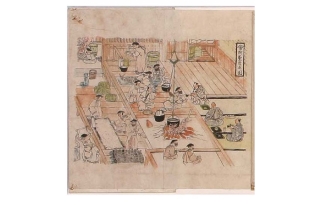
2-7 The City of Fog
In the summer, warm air from the Pacific Ocean forms fog as it moves north and reaches the colder coastline of eastern Hokkaido. Kushiro is known as the “city of fog” for its frequent foggy days in summer. The city is a major port, and low-visibility conditions are hazardous for shipping. For this reason the Kushirozaki Lighthouse was built in 1891.
Initially, the lighthouse had no audible fog warning system. But in July 1922, Crown Prince Hirohito (1901–1989), who later became Emperor Showa (reigned 1926–1989), visited Kushiro during a typical heavy fog, and recommended that the city install a foghorn at the lighthouse. The foghorn was completed in 1925. The trumpet-shaped part, known as a “sounder,” amplified compressed air to create a low-frequency warning tone. This was replaced by an electric version in 1962. The electric foghorn was decommissioned in 2010, after advancements in ship navigation equipment made foghorns unnecessary.
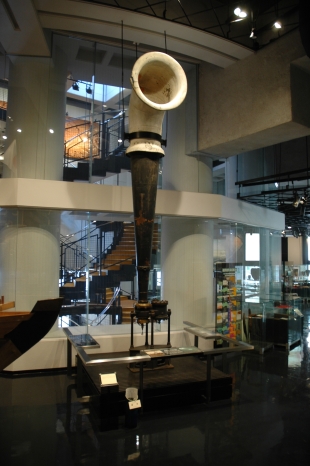
2-8 Hokkaido’s Eastern Timber Hub
Hokkaido’s timber industry developed during the Meiji and Taisho eras (1868–1926) due to the vast forests across the island. Kushiro Port opened in 1899 to transport lumber and agricultural products by sea. In 1901, a train service connected Kushiro with the Tokachi region of central Hokkaido and Kitami to the north, and Kushiro became the main transport hub of eastern Hokkaido.
Lumber yards opened in Kushiro as logs arrived from the forests by train or were floated down the rivers. Most of the lumber was shipped to other parts of Japan or overseas, but some was processed into paper and pulp at factories in Kushiro, a few of which still operate today.
During the winter, when the ground was covered with snow, the logs were brought from the forests to railway stations or river barges on horse-drawn sleds called bachi-bachi. There is a theory that the name derives from the word bachi, meaning “short” in Tohoku dialect. The design was simple but effective. Instead of one fixed-length sled, two short sleds were strapped to the log, one at the front and one at the rear. These could be adjusted to fit any log and slide it smoothly across the snow.
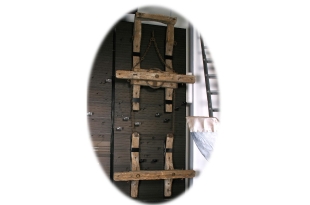
2-9 Coal Mining and the Tomoko System
Large-scale coal mining began in Kushiro in 1916, and the area’s Pacific Coal Mine became one of Japan’s largest. Mining was arduous manual labor that involved chipping away at coal seams deep underground in the light of carbide lamps, which used acetylene gas.
Miners organized themselves into work teams called tomoko (“friendship groups”), each headed by a senior miner in a supervising role. New miners generally spent three years as apprentices before they could join a tomoko. These groups started before unions were established in Japan but served a similar role, facilitating the sharing of skills and encouraging support among members. The miners in a tomoko pooled their money to help each other in the event of injury, disaster, or mine closure, and to contribute to the cost of events like weddings and funerals.
New members were inducted in a formal ceremony in which they drank sake with other members from a shared cup as a symbol of unity. The names and addresses of tomoko members were written on paper scrolls. These lists provide insight into the patterns of migration to Kushiro. The tomoko system was gradually phased out with advances in mechanization and social security, which was introduced at the mine in 1930.
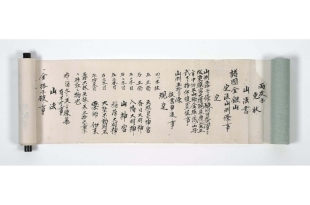
2-10 Kawasaki Boats
Kawasaki boats (Kawasaki-sen) were sturdy wooden sailing trawlers with oars that could handle rough seas. The boats were used along the Sea of Japan from Fukui to Hokkaido from the late Edo period (1603–1867) until 1945. During the Meiji era (1868–1912), Kawasaki boats were mainly used for offshore cod fishing, as well as for trade and transporting settlers between Honshu and Hokkaido.
The boat on display at the Kushiro City Museum is smaller than actual size. It was built by Hiraiwa Hajime, a local shipwright, for the opening of the museum in 1983.
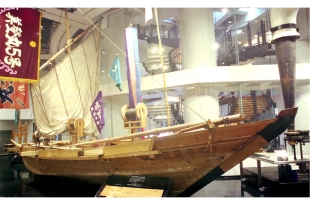
This English-language text was created by the Japan Tourism Agency.
このページに関するお問い合わせ
生涯学習部 博物館 博物館担当
〒085-0822 北海道釧路市春湖台1番7号 博物館
電話:0154-41-5809 ファクス:0154-42-6000
お問い合わせは専用フォームをご利用ください。
